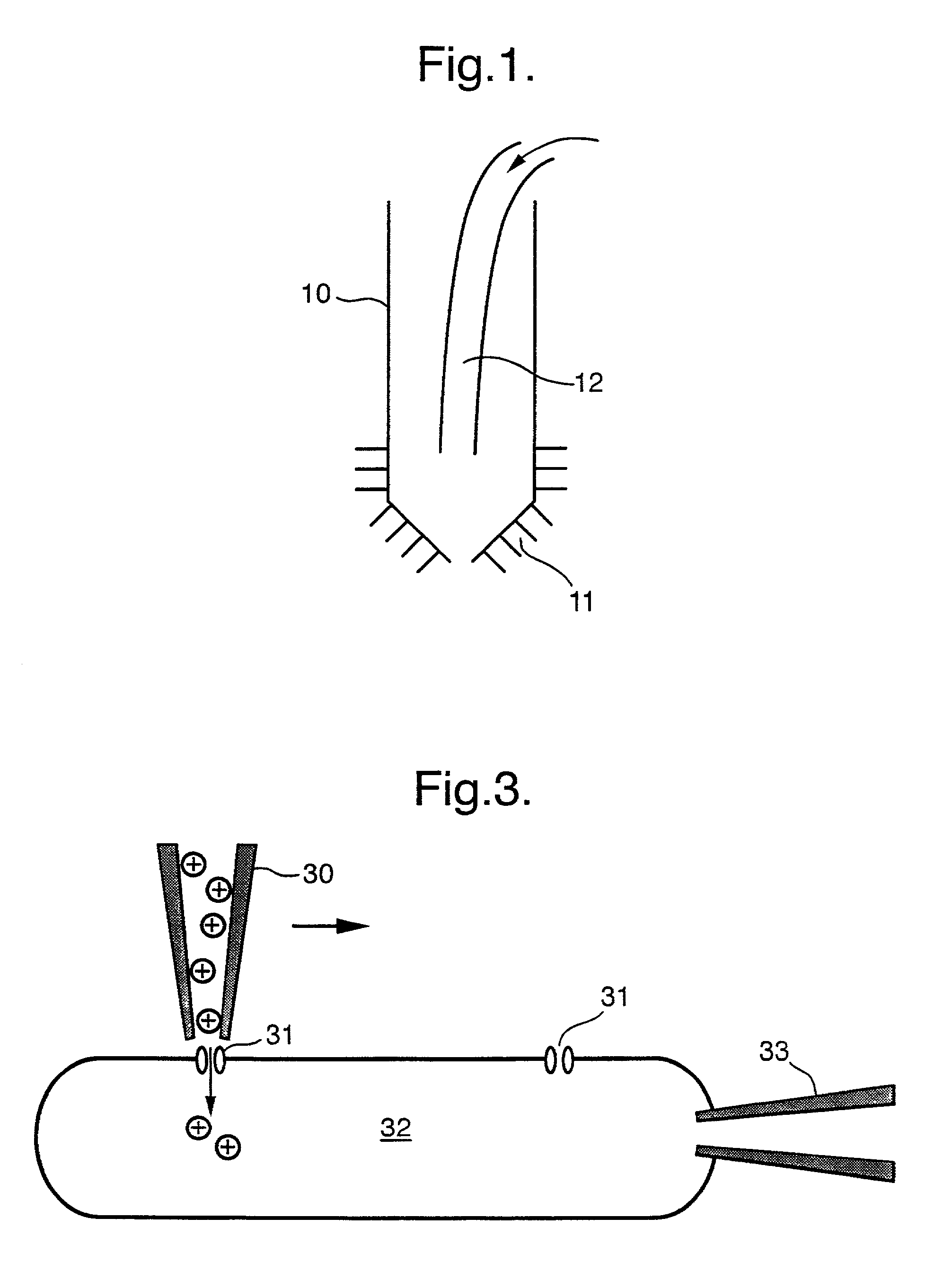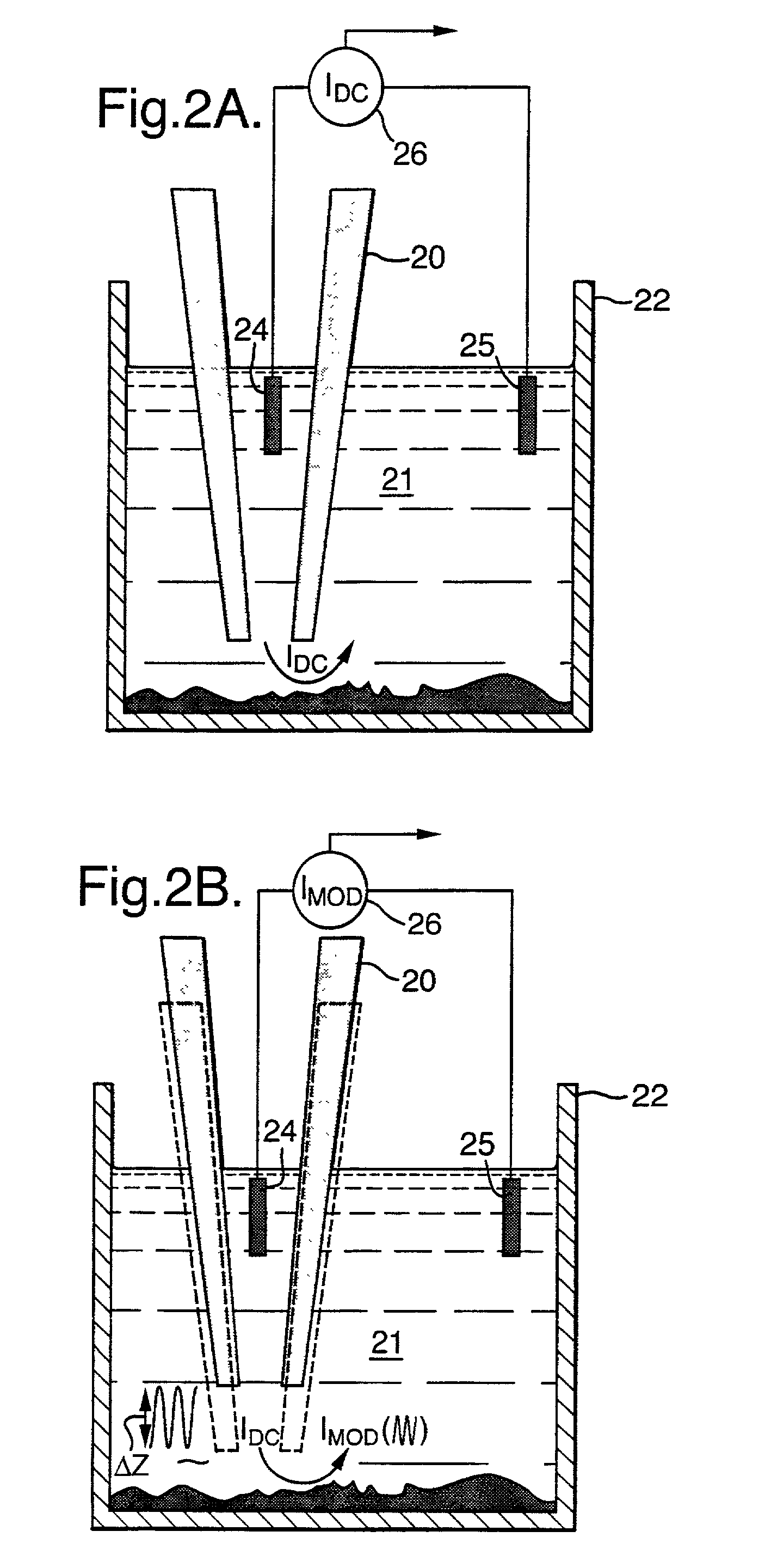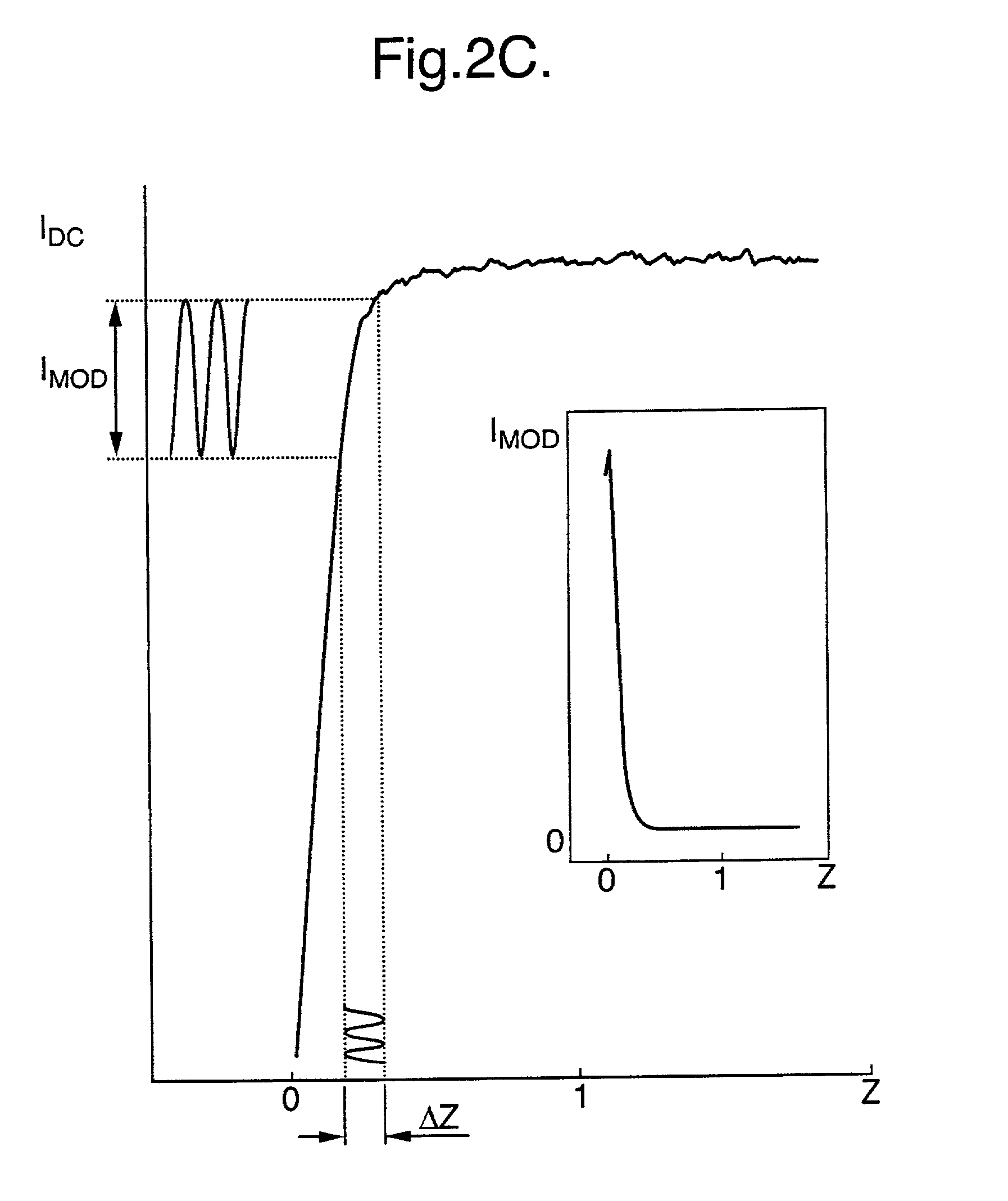Optical microscopy and its use in the study of cells
a technology of optical microscopy and cell, applied in the field of optical microscopy and its use in the study of cells, can solve the problems of limited resolution by diffraction to about 200, 250 nm, and is not possible to use an electron microscope to study living cells, so as to reduce damage and limit light exposure
- Summary
- Abstract
- Description
- Claims
- Application Information
AI Technical Summary
Benefits of technology
Problems solved by technology
Method used
Image
Examples
example 1
[0033]SICM probes are fabricated by pulling borosilicate glass microcapillaries with outer and inner diameters of 1.00 mm and 0.58 mm respectively, using a laser-based micropipette puller (Model P-2000, Sutter Instrument Co., San Rafael, Calif., USA). This reproducibly and easily produces probes with conical taper lengths and apex diameters of 200 nm, 400 nm and 1.0 μm, respectively.
[0034]Three-dimensional and high precision movement of the probe relative to the sample is achieved using a piezo-translation stage (Tritor 100, Piezosystem Jena, Germany) on which the SICM probe is mounted. The stage has a range of 100 μm in the x, y and z directions, so that scanning over biological samples, with features that scale up to 30–50 μm, is made possible. The high voltage required for deformation of the piezo-ceramic material that facilitates the stage's movement is provided by high voltage amplifiers (Piezosystem Jena, Germany). These amplifiers respond to appropriate signals generated by t...
example 2
[0041]This Example again illustrates the focal, highly localized application of ions, agonists, or other agents to a membrane during a scan via the microscope micropipette. Monitoring the electrical response of the cell is conducted with a patch-clamp micropipette. This arrangement is illustrated schematically in FIG. 3.
[0042]More particularly, FIG. 3 shows schematically a scanning micropipette 30 whose tip is adjacent to an ion channel 31 in a cell 32. A patch clamp micropipette 33 provides ion channel current recording.
[0043]This Example investigates the distribution of ATP-regulated K+ channels (KATP channels) in rat cardiomyocyte sarcolemma. KATP channels play important roles in the relaxation and preservation of cardiomyocytes during metabolic stress such as hypoxia or ischemia. Very little is known about their localization in the cell membrane. Experimental conditions were chosen so that intra- and extracellular solutions contain no K+ ions, and the intracellular ATP concentra...
PUM
| Property | Measurement | Unit |
|---|---|---|
| distance | aaaaa | aaaaa |
| size | aaaaa | aaaaa |
| size | aaaaa | aaaaa |
Abstract
Description
Claims
Application Information
 Login to View More
Login to View More - R&D
- Intellectual Property
- Life Sciences
- Materials
- Tech Scout
- Unparalleled Data Quality
- Higher Quality Content
- 60% Fewer Hallucinations
Browse by: Latest US Patents, China's latest patents, Technical Efficacy Thesaurus, Application Domain, Technology Topic, Popular Technical Reports.
© 2025 PatSnap. All rights reserved.Legal|Privacy policy|Modern Slavery Act Transparency Statement|Sitemap|About US| Contact US: help@patsnap.com



